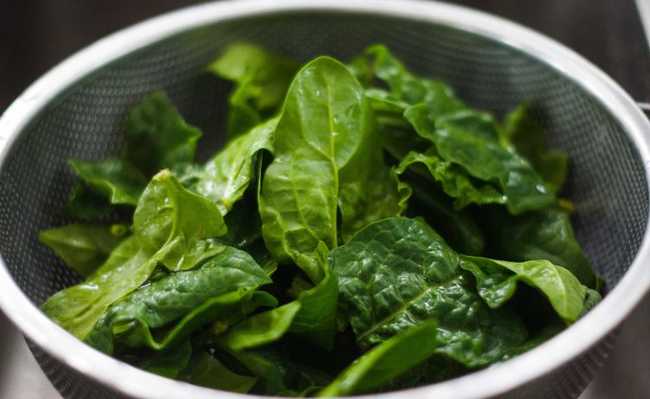Watercress Benefits
Watercress is highly antioxidant and prevents cancer

Watercress is a leafy vegetable that has many health benefits. Its small, rounded leaves and edible stems have a refreshing, slightly peppery flavor.
Watercress is part of the family Brassicaceae vegetables, which also include kale, Brussels sprouts and cabbage. Once considered a weed, watercress was first cultivated in the UK in the early 1800s. Check out its health benefits:
Watercress Benefits
Low in calories and high in nutrients, watercress ranks first on the list. Powerhouse Fruits and Vegetables of the US Centers for Disease Control. A glass with 34 grams of watercress contains:
- Calories: 4
- Carbohydrates: 0.4 grams
- Protein: 0.8 grams
- Fat: 0 grams
- Fiber: 0.2 grams
- Vitamin A: 22% of the Recommended Daily Intake (IDR)
- Vitamin C: 24% of the RDI
- Vitamin K: 106% of the RDI
- Calcium: 4% of the IDR
- Manganese: 4% of the IDR
As you can see, a glass of 34 grams of watercress provides more than 100% of the RDI of vitamin K, a fat-soluble vitamin needed for blood clotting and healthy bones.
Watercress also contains vitamin E, thiamin, riboflavin, vitamin B6, folate, pantothenic acid, magnesium, phosphorus, potassium, sodium and copper.
2. Highly antioxidant
Watercress is full of plant compounds called antioxidants, which protect against cell damage caused by free radicals (damaging molecules that lead to oxidative stress).
Oxidative stress has been associated with several chronic diseases, including diabetes, cancer and cardiovascular disease (see study about it here: 1).
Fortunately, foods rich in antioxidants, such as watercress, can help protect against oxidative stress, which can lower the risk of these diseases.
A study of antioxidant compounds in 12 different cruciferous vegetables found more than 40 flavonoids in watercress.
In terms of total amount of phenols and ability to neutralize free radicals, watercress outperformed all other vegetables in the study.
In addition, the antioxidants in watercress are associated with a lower risk of developing cancer, diabetes and heart disease (see studies about it here: 2, 3)
- Antioxidants: what are they and in what foods to find them
3. Reduces the risk of cancer
As watercress is rich in phytochemicals, it can reduce the risk of developing certain types of cancer.
Watercress and other cruciferous vegetables contain glucosinolates, which are activated into compounds called isothiocyanates when cut with a knife or chewed (see study on this: 4).
Isothiocyanates include chemicals such as sulforaphane and phenothyl isothiocyanate (see studies about it here: 5, 6).
These compounds prevent cancer by protecting healthy cells from damage, inactivating carcinogenic chemicals, and blocking the growth and spread of tumors (see related studies here: 5, 6, 7).
4. Good for heart health
Eating watercress can benefit your heart health in several ways. A review of studies done with more than 500,000 people linked cruciferous vegetable intake to a 16% lower risk of heart disease.
Watercress contains the antioxidants beta-carotene, zeaxanthin and lutein. Low levels of these carotenoids are associated with the development of heart disease and high blood pressure, according to a study.
Others and studies have shown that high levels of carotenoids not only protect against the development of heart disease, but also lower the risk of heart attacks and strokes.
Watercress also contains nitrates, which increase the health of blood vessels, reducing inflammation, stiffness and blood vessel thickness (see study on this: 8 ).
Watercress nitrates have also been shown to reduce blood pressure by increasing nitric oxide in the blood (see study about it here: 9).
5. Lowers cholesterol
Watercress can even lower cholesterol, which can improve heart health.
In a ten-day study in rats with high cholesterol, treatment with watercress extract reduced total cholesterol by 34% and bad cholesterol by 53%.
6. Prevents osteoporosis
Watercress contains many minerals necessary for bone health, including calcium, magnesium, potassium and phosphorus.
Although calcium is well known for its effects on bone health, magnesium, vitamin K and potassium also play important roles (see study on this here: 10).
One study has shown that a balanced diet rich in nutritious vegetables such as watercress is correlated with a positive effect on bone health.
In addition, one cup (34 grams) of watercress provides more than 100% of the RDI of vitamin K.
Vitamin K is a component of osteocalcin, a protein that forms healthy bone tissue and helps regulate bone turnover (see studies about it here: 11 , 12 ).
In one study, people with the highest intake of vitamin K were 35% less likely to experience a hip fracture than people with the lowest intake.
7. Good for immunity
Watercress contains 15 mg of vitamin C per cup (34 grams), which represents 20% of the RDI for women and 17% for men (see study about it here: 13).
Vitamin C is known for its beneficial effects on the health of the immune system. Vitamin C deficiency has been associated with decreased immune function and increased inflammation (see study about it here: 14).
Vitamin C stimulates the immune system, increasing the production of white blood cells that fight infections (see study about it here: 15).
Although studies in the general population have not conclusively shown that vitamin C lowers the risk of the common cold, it reduces the duration of symptoms by 8% (see study here: 16).
8. Aids weight loss
Although not specifically studied, watercress can also have weight control benefits.
It is an extremely nutrient-rich food - one cup (34 grams) contains only four calories, but it provides several important nutrients.
If you're trying to lose weight, it's worth trying to add this nutritious, low-calorie vegetable to your diet.
9. Improves athletic performance
Vegetables in the Brassicaceae family contain high levels of nitrates in the diet.
Nitrates are compounds found naturally in foods such as beets, radishes and vegetables such as watercress.
They relax blood vessels and increase the amount of nitric oxide in the blood, which can improve athletic performance (see study on this: 17).
Furthermore, nitrate reduces resting blood pressure and decreases the amount of oxygen needed during exercise, which can increase exercise tolerance (see study on this: 18).
Although a considerable amount of research indicates that dietary nitrates can improve exercise performance, conclusive evidence that watercress improves athletic performance is lacking.
10. Protects eye health
Watercress contains lutein and zeaxanthin, which are antioxidant compounds from the carotenoid family.
Numerous studies have shown that lutein and zeaxanthin are essential for eye health. These compounds protect the eyes against damage caused by blue light (see study about it here: 19) .
To learn about the effects of blue light on eye health and how to protect yourself from it, check out the article: "Blue light: what it is, benefits, harm and how to deal with it".
Lutein and zeaxanthin have also been associated with a lower risk of developing age-related macular degeneration and cataracts (see study on this: 20).
In addition, the consumption of vitamin C, which is also present in watercress, is associated with a lower risk of developing cataracts (see study about it here: 21).
11. It's easy to add to the diet
Watercress can be used in a wide variety of dishes.
However, to get the maximum benefit from its active antioxidant compounds, it's best to eat it raw or lightly steamed (see study about it here: 22).
Here are some easy ways to add watercress to your diet:
- Add to your salad;
- Add to soup after cooking;
- Use it to replace lettuce in a snack;
- Make it into pesto by mixing it with garlic and oil;
- Juice with ginger and orange;










